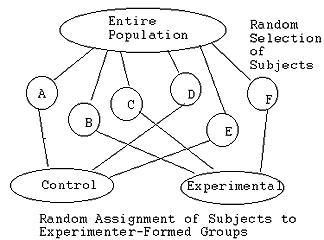
1 minute read
5.11 The True Experiment and Quasi-Experiment
by Kigatei
The procedure is from the entire population, the researcher randomly selects the subjects and randomly assigns the subjects to experiments and leaves other groups as control groups. See
Fig.A1 below as presented in Wikipedia (2010)
Advertisement
Fig.A1
In the preceding researcher first: scenario, the
1. Randomly selected subjects A through F from the larger population; AND 2. Then randomly assigned these individuals to (experimenter-formed) groups. In our example, by coin-flipping or some other random procedure, Subjects A, D &
E "landed" in the control group (e.g., the class that will get the traditional lecture), while Subjects B, C, & F "landed" in the experimental or treatment group (e.g., the researcher-formed class that will get the hands-on science instruction, say).
The two levels of "randomization" help to ensure good control of those pesky contaminating or confounding variables. You're more likely to get a "good mix" on all those other factors when you can randomly draw your subjects and also randomly assign them to groups that you as the researcher have the "power" to form. What if you get the OK to do your research within a school district, but the District Education Officer In-Charge comes and says "Oh no I can't let you be disrupting our bureaucratic organization here and "making your own 4th grade classrooms for your study. That is too disruptive.
The best you can do to counteract the threat is to randomly select INTACT existing
4th grade classrooms and then go ahead and use all the kids in those randomly drawn
GROUPS instead.
5.11 The True Experiment and Quasi-Experiment
Which brings us to the 2nd variant of "experimental designs:"



